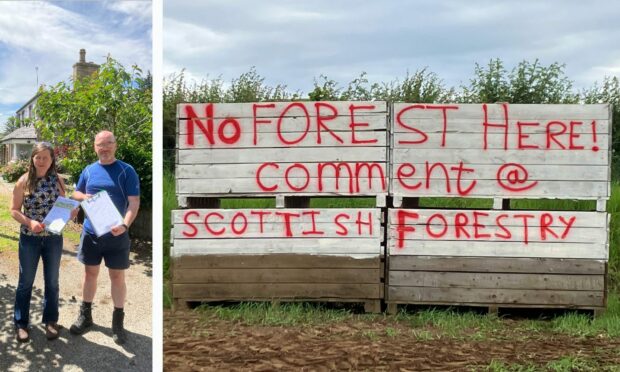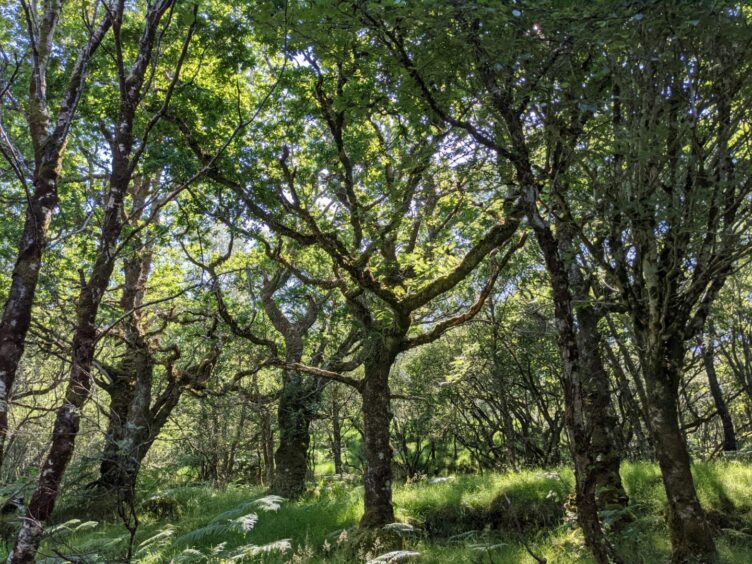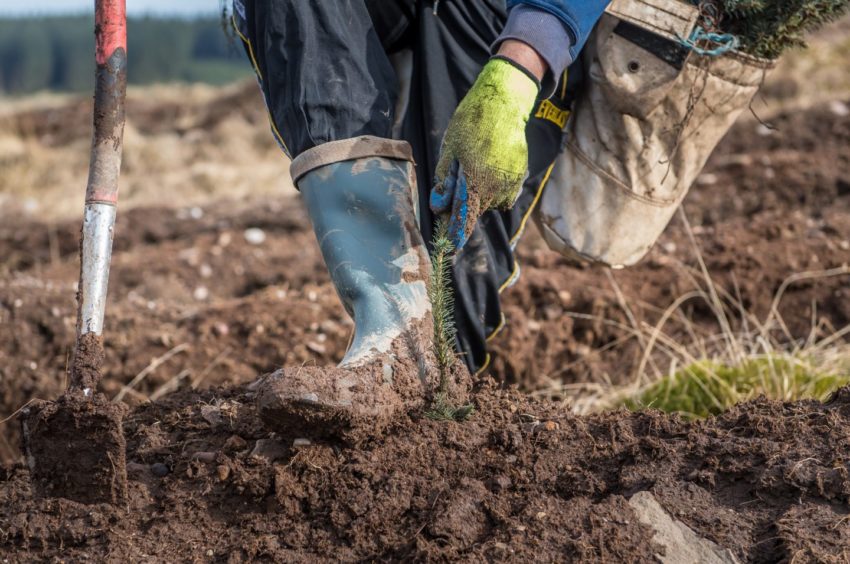An Aberdeenshire farm could be transformed into a forest with the aim of helping to tackle climate change — but why have locals rallied against the plans?
Treeline Forestry is proposing to plant a mix of sitka and conifer trees on almost 500 acres of farmland west of Rhynie.
The new commercial woodland is proposed to help deliver a sustainable supply of wood and wood fibre to local markets.
Those behind the plans say the new forest will also help the Scottish Government meet its net zero carbon emissions targets to tackle climate change.
Opposition grows against Mains of Rhynie farm forest plans
However, opposition is growing against the plans, as almost 500 people signed an online petition to stop the project, and a physical door-to-door petition has also received a lot of support.
The Mains of Rhynie Action Group (MRAG) was set up to fight the “woodland creation”.
Despite their opposition to the plans, they stress they are not against planting trees — but against planting “wrong trees in the wrong place for all the wrong reasons”.
Members of the MRAG can’t understand why farmland is being used and are worried a 500-acre forest bordering the village will “cast a shadow” over their home.
Others were angered to discover the project by “happenchance” rather than through any formal consultation process.
There is also a concern the new forest, made up of non-native trees, will disrupt wildlife and the current ecosystem in the area.
‘It just seems to be so wrong’
Treeline Forestry has applied to the Scottish Government’s Forestry Grant Scheme, which encourages farmers and landowners to “maximise underproductive land” by creating woodlands.
The campaigners fear the project will instead turn into a commercial timber plant, under the “guise of carbon sequestration”, funded by the government (and in turn, the public purse).
Simon Beeson, who has lived in the village for 33 years believes if the developers were serious about climate change they would be planting broadleaf, slow-growing oaks instead.
“It seems to be so wrong,” he said. “We’re absolutely not against planting trees, but let’s have the right trees in the right place.
“We should focus on upland planting, or planting broadleaf trees that will be there for hundreds of years, not just 20.
“Where I’m coming from, and I think I’ll speak for the village when I say this, these things just need to take a pause, because there’s an undercurrent of movement against all this happening.”
The 58-year-old argues that farmland should be kept for agricultural use, explaining there seems to be an “influx” of people buying farms to create woodlands.
However, whatever isn’t grown or provided locally needs to come from somewhere else.
Members of the MRAG, believe they are not being listened to and have accused the project of “greenwashing”.
Mr Beeson, who works in oil and gas, explained there is a feeling in the village that despite going through all the “hoops and arguments”, the plans will still go through.
“It makes you wonder why you bother in the first place,” he finished.
‘Forestry and farming can and do exist together’
A Scottish Forestry spokesman stressed that every proposed woodland is “subject to rigorous assessment” and consulting with local communities is a key part of the application process.
The applicant’s proposals were placed on the Public Register for comment and the deadline was extended to give people more time for feedback.
The consultation period ended on July 21, and the application is still being considered.
“At this stage, we have taken no decision or expressed a view on the project,” the spokesman explained.
“Expanding Scotland’s woodlands and forests is vital if we are to tackle the twin crises of climate change and nature loss. For this reason, Scotland has the most ambitious woodland creation targets in the UK.
“Under our role as the Scottish Government’s forestry regulator, every new proposed woodland project is subject to rigorous assessment against the high benchmarks set by the UK Forestry Standard.
“It is important to note that all woodland projects are required to include a percentage of native woodland in their schemes and we are committed to ensuring the right trees are planted in the right place.”
Thousands of acres of woodland planted all across Scotland
Since 2015, Scotland has planted over 185,300 acres of new woodland. According to the spokesman, if it all had been planted on farmland, it would still be less than 2% of the total agricultural land in the country.
The spokesman added: “Forestry and farming can and do exist together and we can achieve our woodland creation targets without the need to plant on prime agricultural land. As part of the approval process for Mains of Rhynie we will be taking all this into account when taking a decision on the current application.”
Treeline Forestry has been approached for a comment.



Conversation